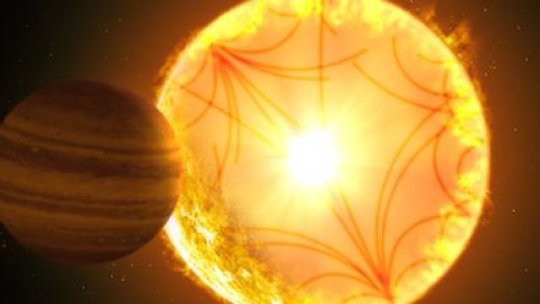[ad_1]
An international team of astronomers, led by University of Hawaii graduate student Ashley Chontos, announced the confirmation of the first exoplanet candidate identified by NASA’s Kepler Mission. The result was presented at the fifth Kepler/K2 Science Conference held in Glendale, CA.
Launched almost exactly 10 years ago, the Kepler Space Telescope has discovered thousands of exoplanets using the transit method — small dips in a star’s brightness as planets cross in front of the star. Because other phenomena can mimic transits, Kepler data reveal planet candidates, but further analysis is required to confirm them as genuine planets.
Despite being the very first planet candidate discovered by NASA’s Kepler Space Telescope, the object now known as Kepler-1658 b had a rocky road to confirmation. The initial estimate of the size of the planet’s host star was incorrect, so the sizes of both the star and Kepler-1658 b were vastly underestimated. It was later set aside as a false positive when the numbers didn’t quite make sense for the effects seen on its star for a body of that size. Fortuitously, Chontos’ first year graduate research project, which focused on re-analyzing Kepler host stars, happened at just the right time.
“Our new analysis, which uses stellar sound waves observed in the Kepler data to characterize the host star, demonstrated that the star is in fact three times larger than previously thought. This in turn means that the planet is three times larger, revealing that Kepler-1658 b is actually a hot Jupiter-like planet,” said Chontos. With this refined analysis, everything pointed to the object truly being a planet, but confirmation from new observations was still needed.
“We alerted Dave Latham (a senior astronomer at the Smithsonian Astrophysical Observatory, and co-author on the paper) and his team collected the necessary spectroscopic data to unambiguously show that Kepler-1658 b is a planet,” said Dan Huber, co-author and astronomer at the University of Hawaii. “As one of the pioneers of exoplanet science and a key figure behind the Kepler mission, it was particularly fitting to have Dave be part of this confirmation.”
Kepler-1658 is 50% more massive and three times larger than the Sun. The newly confirmed planet orbits at a distance of only twice the star’s diameter, making it one of the closest-in planets around a more evolved star — one that resembles a future version of our Sun. Standing on the planet, the star would appear 60 times larger in diameter than the Sun as seen from Earth.
Planets orbiting evolved stars similar to Kepler-1658 are rare, and the reason for this absence is poorly understood. The extreme nature of the Kepler-1658 system allows astronomers to place new constraints on the complex physical interactions that can cause planets to spiral into their host stars. The insights gained from Kepler-1658b suggest that this process happens slower than previously thought, and therefore may not be the primary reason for the lack of planets around more evolved stars.
“Kepler-1658 is a perfect example of why a better understanding of host stars of exoplanets is so important.” said Chontos. “It also tells us that there are many treasures left to be found in the Kepler data.”
Story Source:
Materials provided by University of Hawaii at Manoa. Note: Content may be edited for style and length.
[ad_2]















